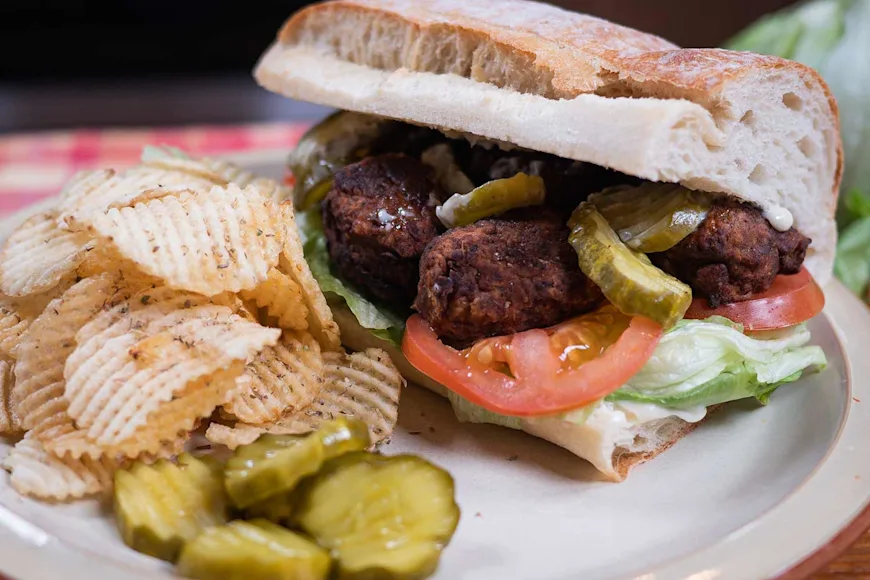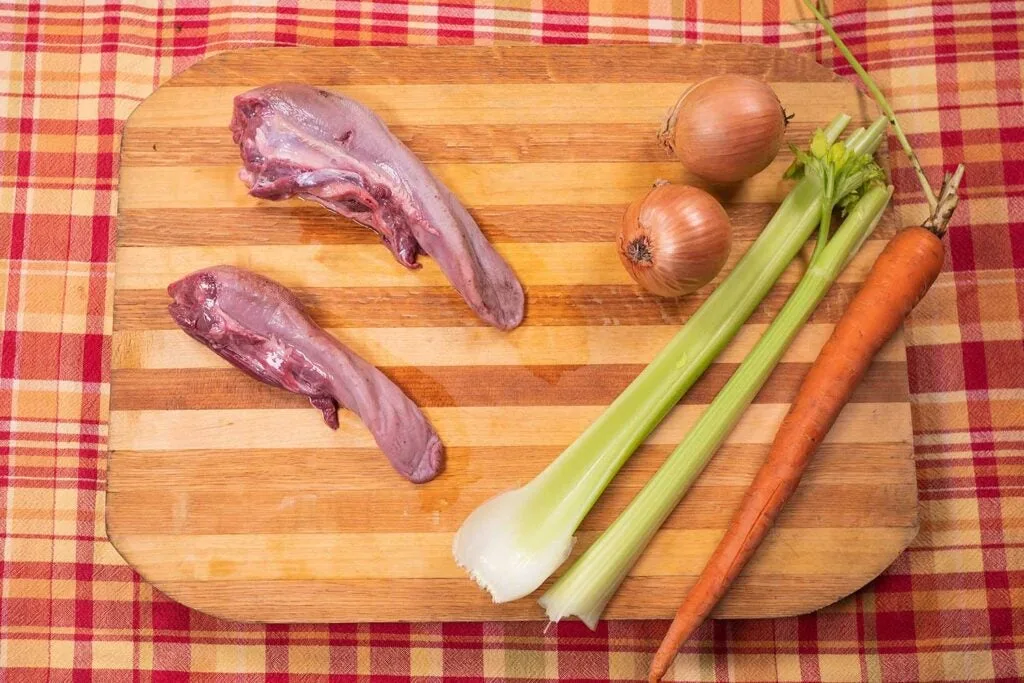
Our recipe for quick-pickled deer tongue makes a dynamite bar snack. Michael R. Shea
While butchering two whitetail deer with my buddy Cosmo Genova, I mentioned that I wished I liked the taste of organ meats and offal. Liver, heart, tongue, and even kidneys and testicles are nutrient-dense superfoods. After all, there’s a reason wolves and big cats eat the guts first. He responded with a bet, wagering me a backstrap that he could take the parts that many hunters leave in gut piles and make them into delicious meals with easy-to-duplicate recipes. Genova grew up on a small farm and has been butchering animals since before he can remember. He’s also worked in the kitchens of some high-dollar restaurants. In other words, he knows his way around a kitchen.
Turns out I owe him a backstrap. Each recipe he made from the offal of our deer was better than the next. Even better, you don’t have to be a fancy chef to cook these parts right. So quit feeding the coyotes the best parts of your deer, and give these five nose-to-tail whitetail recipes a try.
How to Cook Venison Liver Pâté
This recipe makes roughly 4 pints of delicious venison pâté, best served with a good French bread, mustard, and pickled vegetables. The whole process takes less than 45 minutes and can be made with one pan and a food processor. Freezing liver generally compromises the texture, but with this recipe, all of the ingredients are blended, so frozen liver will actually work just fine. The fat cap at the end of the recipe air-seals the pâté, which helps this dish last up to three weeks refrigerated, and it can be frozen indefinitely. This recipe is a hit at parties, and is a good one for people who are new to organ meat.
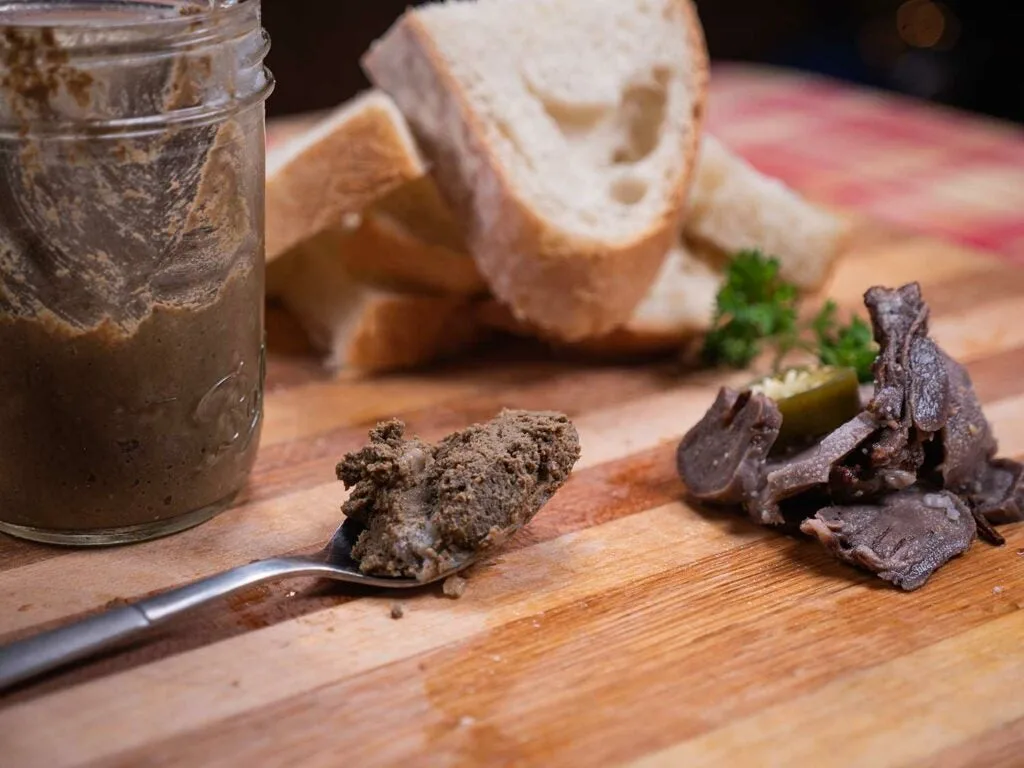
Venison liver pâté is a delicious gateway recipe to folks who might be hesitant to try liver. Michael R. Shea
Ingredients
1 venison liver
Milk
1 lb. bacon, roughly chopped
2 carrots, roughly chopped
3 celery stalks, roughly chopped
2-3 onions, roughly chopped
2-3 apples, roughly chopped
2 cups red wine
2 cups heavy cream, divided
2 Tbsp. salt
½ Tbsp. black pepper
1 Tbsp. dried oregano
2 tsp. onion powder
2 tsp. garlic powder
1 tsp. cinnamon
½ tsp. nutmeg
1 tsp. paprika
2 Tbsp. duck fat
Mason jars
.embed-container { position: relative; padding-bottom: 56.25%; height: 0; overflow: hidden; max-width: 100%; } .embed-container iframe, .embed-container object, .embed-container embed { position: absolute; top: 0; left: 0; width: 100%; height: 100%; }
Directions
Rinse and clean the liver under cold water. Soak the liver in milk for 2 to 3 days, replacing the milk daily. After the soak, roughly chop the liver.
Render bacon fat in cast iron skillet, then add the liver and cook until brown. Add the vegetables and apples to the skillet, followed by the seasonings.
Deglaze the pan with the red wine, and cook down until most of the liquid has evaporated.
Transfer the mixture, while hot, to a food processor.
Add 1 ½ cups of the heavy cream to the empty skillet and scrape the drippings in the pan, and transfer them to the food processor.
Blend on high for 10 to 15 minutes, or until a creamy, smooth consistency forms.
Run the pâté through a sieve or strainer. Fold in last ½ cup of heavy cream into the pâté.
Pack the pâté into mason jars and let cool with the lids off. Warm the duck fat in a pan or microwave and pour 1/4 inch over top of each jar and let cool.
How to Cook Venison Steak and Kidney Hand Pies
Here’s a British hunter’s hand pie adopted for the whitetail woods. Back in the Old World, kidneys were considered low-class, reserved for the folks who couldn’t afford backstrap. But what the nobility didn’t realize is that cooked right, kidneys taste damn good. If you like Hot Pockets and venison stew—and who the hell doesn’t—these are for you.
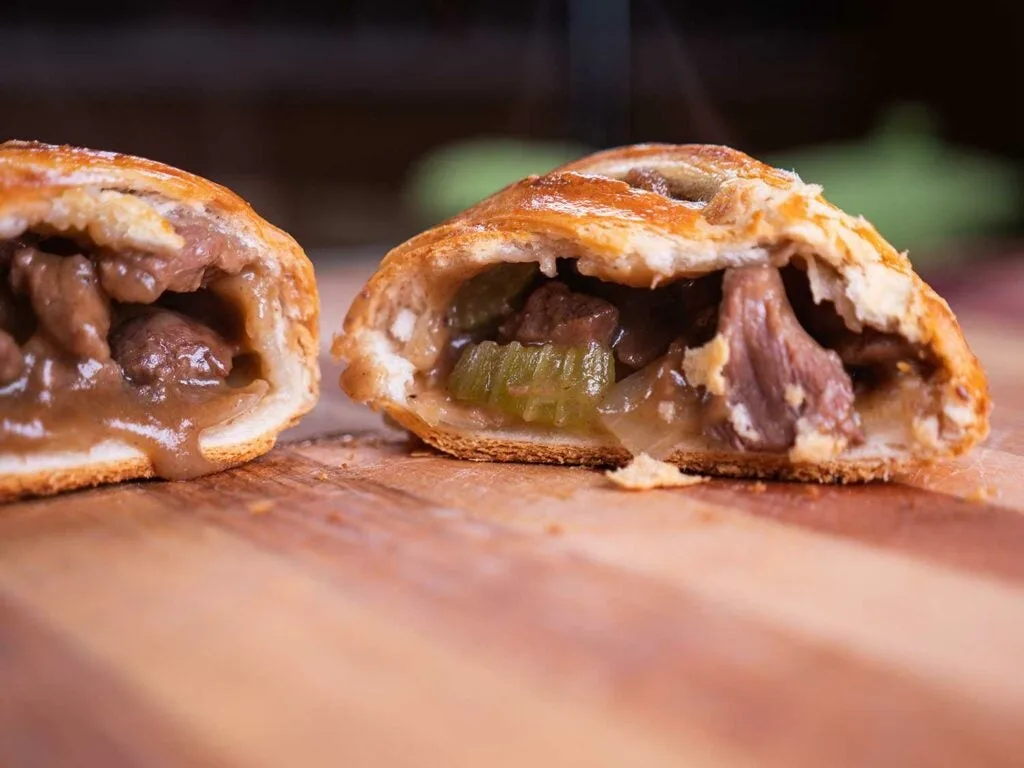
Venison steak and kidney hand pies might be the perfect—and portable—comfort food. Michael R. Shea
Ingredients
2 to 6 deer kidneys, trimmed and cut into 1-inch chunks
Milk
1 lb. of venison steak, cut into 1-inch chunks
Vegetable oil
1/2 stick of butter, divided
2 Tbsp. flour
2 cups beef stock
1 bottle of dark beer
1 tsp. salt
1 tsp. pepper
1 tsp. onion powder
1 tsp. garlic powder
1 or 2 carrots, chopped
2 celery stalks, chopped
1 large white onion, chopped
Biscuit dough or puff pastry
2 eggs, beaten
Parsley for garnish
.embed-container { position: relative; padding-bottom: 56.25%; height: 0; overflow: hidden; max-width: 100%; } .embed-container iframe, .embed-container object, .embed-container embed { position: absolute; top: 0; left: 0; width: 100%; height: 100%; }
Directions
Split the kidneys length-wise, and remove and discard the white inner connective tissue. Soak the kidneys in milk for several days, replacing the milk at least once a day.
Heat half of the butter in a large skillet over medium-high heat, and sauté the kidney meat until soft, about 10 minutes.
Make a roux by adding the other half of the butter and the flour to the skillet, stirring constantly.
Add the stock, seasonings, and a splash of dark beer. Cook down until thick.
Mix in the vegetables and cook for several minutes, then remove from the heat and let cool.
Roll out the biscuit dough or puff pastry into thin 8-inch circles. Add a large spoonful of the meat mixture to center of the dough.
Wash the edge of the dough with egg, then fold the dough over in a half moon, and crimp the edges with a fork. Finish by washing the top of the pies with the egg wash.
Bake at 375 degrees for 15 minutes, or until golden brown.
How to Cook Deer Heart Katsu
Katsu is a traditional Japanese dish, typically made with pork or chicken, in which a cutlet is pounded thin, breaded in panko, and deep-fried. It’s also a hell of a tasty way to cook deer heart. This recipe is a great way to introduce people to the heart—because, who doesn’t love fried food? The process tenderizes and tames the otherwise chewy texture of heart, but retains all of the meat juices in a single, delicious cutlet. It’s best served with a fresh slaw and spicy mayo.
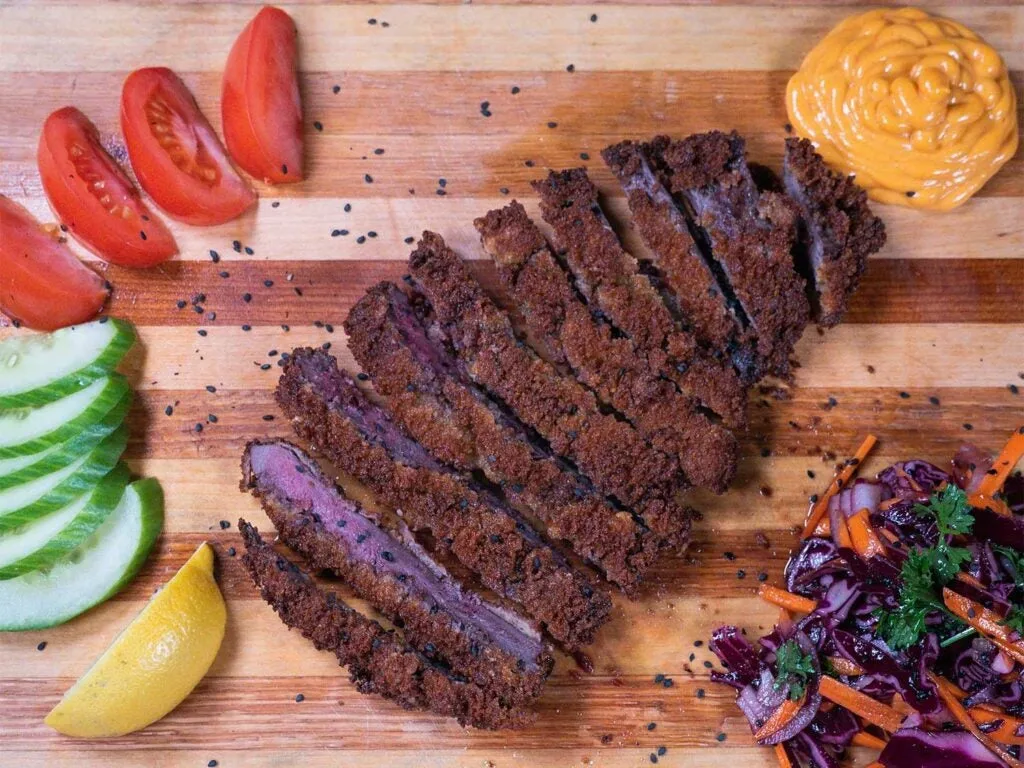
Here’s all you need to know about katsu—it’s deep-fried and it’s delicious. Michael R. Shea
Ingredients
For the slaw:
1 head of red, green, or napa cabbage, finely shredded
1 red onion, thinly sliced
2 carrots, thinly sliced
1 Tbsp. Rice wine vinegar
½ cup Katsu sauce
For the katsu:
1 deer heart
½ tsp. of salt, onion powder, black pepper, and cayenne
2-3 eggs, beaten
Splash milk or cream
2 cups flour
2 cups panko bread crumbs
Vegetable oil
Sriracha mayo
Sesame seeds for garnish
.embed-container { position: relative; padding-bottom: 56.25%; height: 0; overflow: hidden; max-width: 100%; } .embed-container iframe, .embed-container object, .embed-container embed { position: absolute; top: 0; left: 0; width: 100%; height: 100%; }
Directions
Make the slaw: In a large bowl, mix the cabbage, red onion, carrot, rice wine vinegar, and katsu sauce together. Set aside.
Clean and devein the heart. Following the natural muscle seams, open the heart up much like opening a bell pepper. The heart should now look like a meaty rectangle. Remove any remaining veins or white connective tissue inside.
Pound the heart thin with a mallet or rolling pin.
In a large bowl, mix the flour with salt, onion powder, black pepper, and cayenne. In a separate bowl, beat the eggs and add a dash of milk or cream. Place the panko crumbs in a third bowl. Keep all three bowls near enough other. This will be your dredging station.
Preheat a skill with vegetable oil over high heat. When a pinch of flour sizzles, it’s ready.
Dredge the heart in the seasoned flour. Shake off any excess flour, then dip the heart into the egg wash. Finally, dredge the heart in the panko crumbs.
Carefully place the heart in the hot oil, and fry for about 2 to 3 minutes on each side, or until golden brown.
Slice the heart, and garnish with sesame seeds. Serve with a spicy mayo and the slaw on the side.
How to Cook Deer Testicle Po’Boys
Here’s a New Orleans classic tweaked for deer camp. Your buddies might flinch at this recipe—until they try it. Or just let them eat it first, then tell them what they’re eating after they’ve scarfed it down. Rocky Mountain Oysters have a cult following in the West, and for good reason. They’re delicious. So don’t leave these tasty bits in the gut pile. You can’t really mess up this simple recipe, and you’ll have plenty of joke material around deer camp, too.
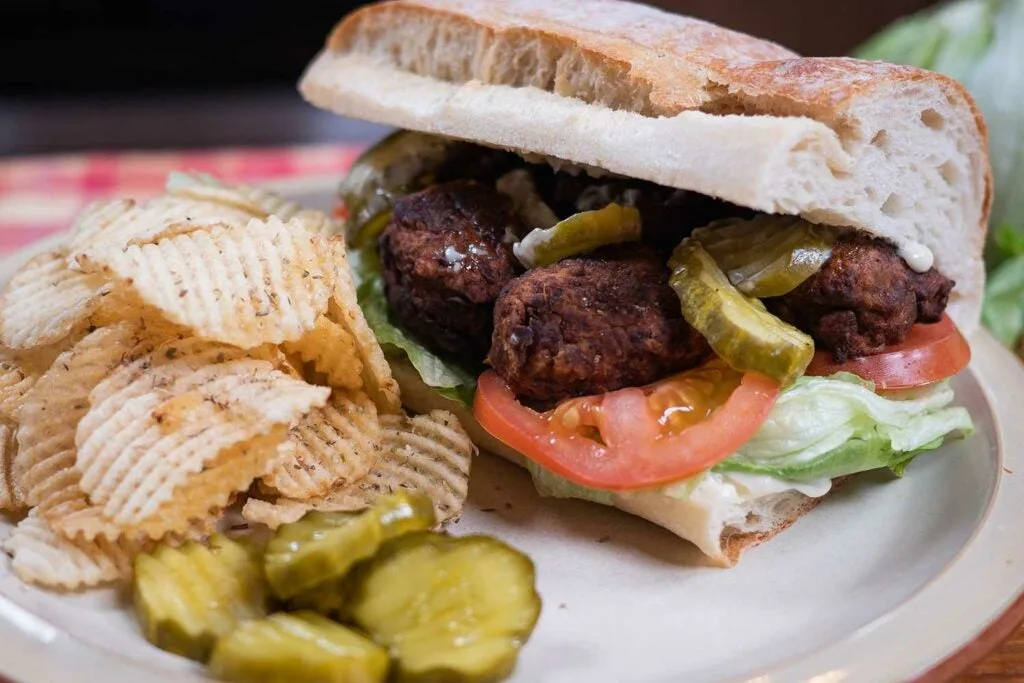
Have a ball. No, really, have a ball. They’re delicious. Michael R. Shea
Ingredients
2 to 4 buck testicles per sandwich
1 cup white vinegar
2 cups flour
1 tsp. salt
2 tsp. Old Bay
1 tsp. dried oregano
2 eggs
1 cup buttermilk
Vegetable oil
Po’Boy-style loaves
Mayonnaise, shredded lettuce, sliced tomatoes, and pickles for garnishes
.embed-container { position: relative; padding-bottom: 56.25%; height: 0; overflow: hidden; max-width: 100%; } .embed-container iframe, .embed-container object, .embed-container embed { position: absolute; top: 0; left: 0; width: 100%; height: 100%; }
Directions
Remove the testicles from the scrotum. Rinse the testicles under cold water.
Add the vinegar to a medium-size pot along with 3 cups of water, and season generously with salt. Add the testicles to the pot and bring to a boil, then reduce the heat and gently poach the testicles for an hour. Remove the testicles from the pot and peel off the outer membrane. Let them cool to room temperature.
In a skillet or Dutch oven, heat the vegetable oil on medium-high.
In a large bowl, mix the flour, salt, Old Bay, and dried oregano. In a separate bowl, whisk the eggs and add the buttermilk.
Dredge the testicles in the seasoned flour. Shake off the excess flour, then dip them in the egg and buttermilk mixture. Roll them again in the season flour.
Carefully add the testicles in the hot oil, and fry until golden brown.
Assemble the sandwiches: Spread a generous portion of mayo on each slice of bread, and add 2 to 4 testicles. Garnish with lettuce, tomato slices, and pickles.
How to Pickle Deer Tongue
One of the most underrated cuts on a deer might just taste the best. The high-fat content of tongue makes it a versatile cut in most any recipe, but few are as simple as this. Quick-pickling doesn’t require canning, but once refrigerated the meat will still keep for weeks. Salty, spicy, with an uncanny pork-like flavor, pickled deer tongue makes an excellent bar snack.
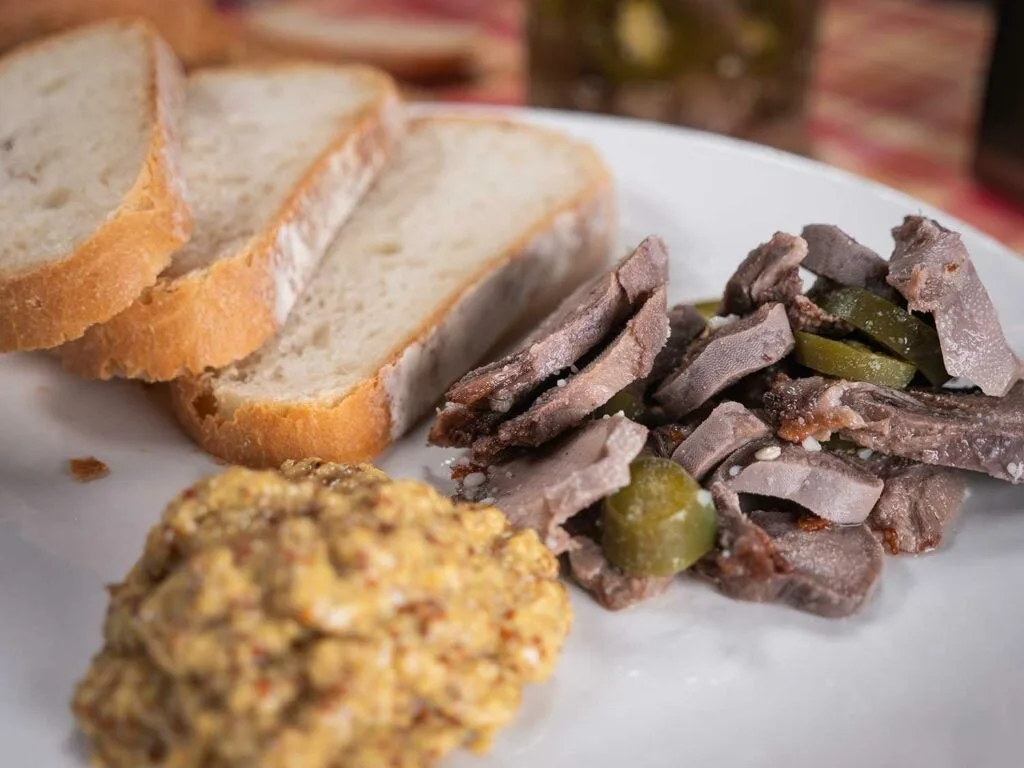
Enjoy this recipe with a strong, cold beer. Michael R. Shea
Ingredients
2 to 4 deer tongues
2 carrots, roughly chopped
2 white onions, roughly chopped
2 celery stalks, roughly chopped
1 cup white vinegar
1 cup apple cider vinegar
3/4 cup salt
1 cup sugar
2 jalapeños, thinly sliced
2 cloves of garlic, thinly sliced
1 cinnamon stick, per jar
Pinch of pepper corns and/or chili flakes, and cloves
Mason jars
.embed-container { position: relative; padding-bottom: 56.25%; height: 0; overflow: hidden; max-width: 100%; } .embed-container iframe, .embed-container object, .embed-container embed { position: absolute; top: 0; left: 0; width: 100%; height: 100%; }
Directions
Rinse and clean the tongues under cold water.
Bring a large pot of water to a boil. Add the tongues and the vegetables, then reduce the heat. Simmer for about 3 to 6 hours.
Remove the tongues from the water and scrape off the outer membrane. Slice the tongues into thin rounds.
Make a brine: Bring the vinegars to a boil and add the salt and sugar, stirring until they’re dissolved. Remove from heat.
Divide the tongue slices, jalapeños, garlic, and spices among the mason jars, then fill each with the brine. Let the brine cool, then cap each jar. Place the jars in the refrigerator. The tongue will pickle in as soon as three hours, but tastes better if you give it a few days.

